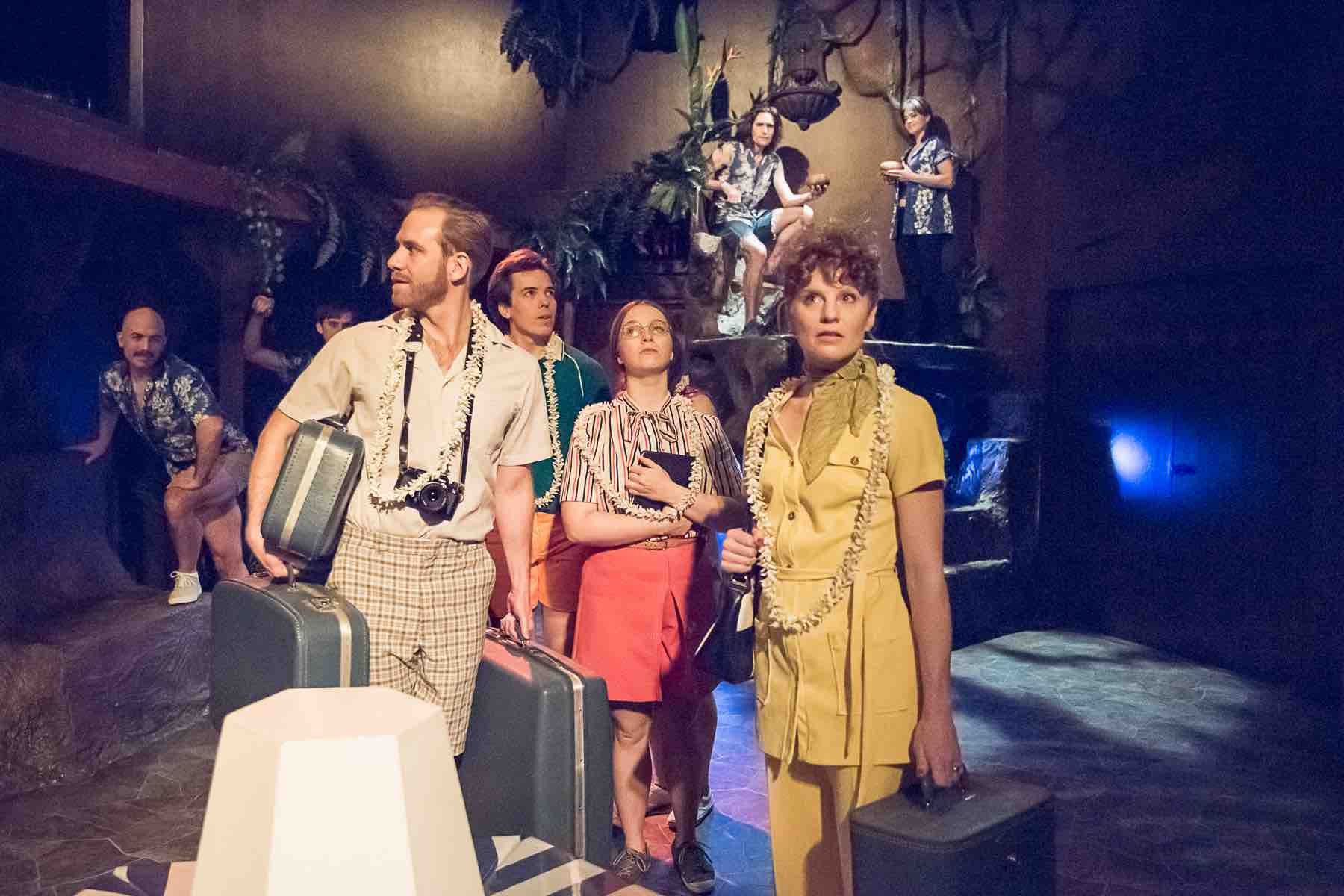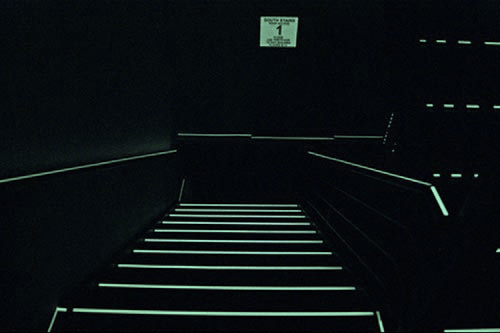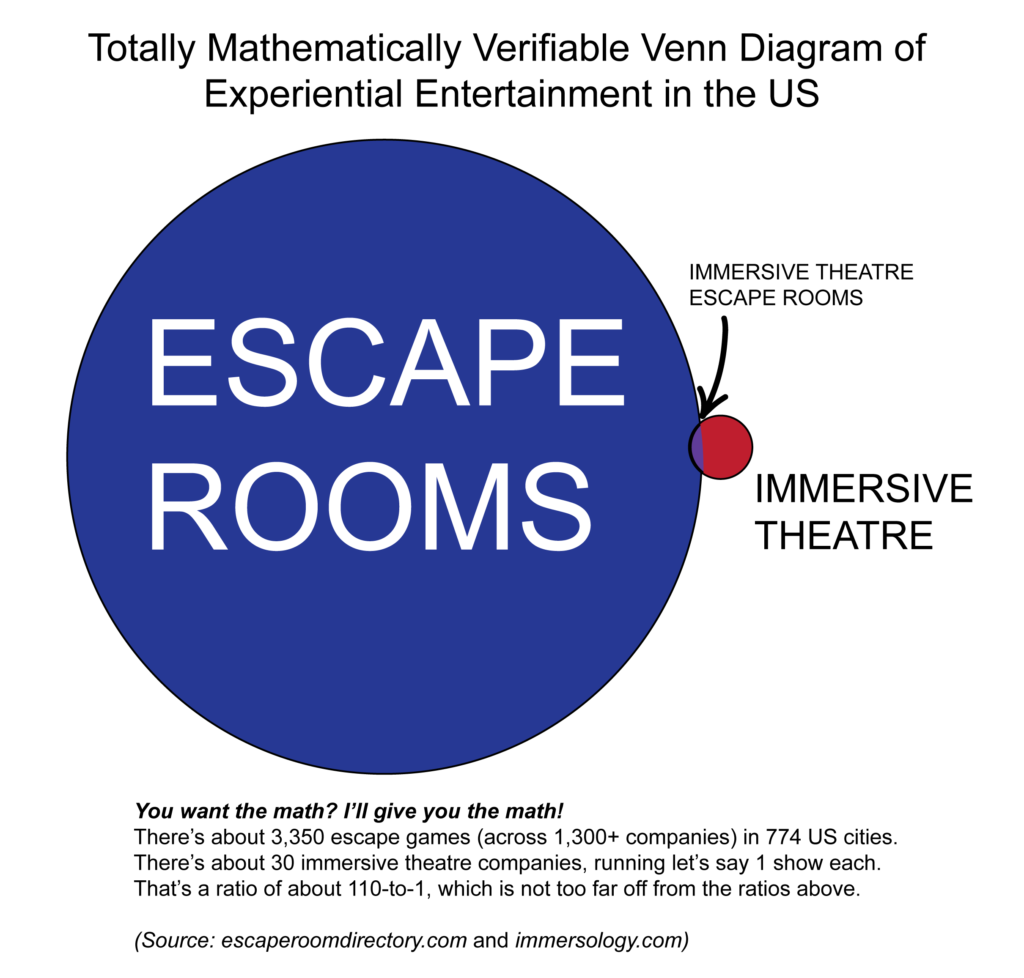My co-founder Cameron and I debated for too long whether we should attend Transworld’s Room Escape Conference. Considering we talked like a non-stop fireworks show for the twelve-hour drive home, plus meals and camping time, followed promptly by a three-hour production meeting, presenting concrete, actionable items…I’d say it was worth it.
Below are some of Strange Bird Immersive’s takeaways from the conference, from the talks we attended (or were a part of) to the games we played. Note that this list is NOT a summary of the main idea nor does it include ideas that we’ve already adopted. There were a lot of ideas presented that, frankly, were part of Strange Bird’s game-plan Day 1.

Instead, this list features something a bit more interesting—what Strange Bird learned. It’s either something that was new to us, or the rationale behind a design instinct we had, or “Holy crap! Somebody else came to the same conclusion! Maybe we’re onto something…” We’re talking higher-order revelations, the kind of things that can elevate your work from great to successful. (Note that we did not attend every talk, but specifically went to those we thought we stood to gain from, so this is again not intended to be comprehensive.)
If I’ve learned anything, it’s that escape room companies are co-petors, not competitors. If we all craft better experiences, we’ll make more enthusiasts. This post (heck, the whole blog) is my commitment to that.
Achieving #1 google ranking (Brad Kendall, Escape Assist)
- Make sure all of your name and address listings are identical
- List your category of business as “Tourist Attraction”
- Register on Google, Yahoo, and Bing Places
- Blog: Google rewards new content, hence why a blog is a good idea. To make the most of it, move it to your URL. (Did you notice that Immersology just relocated?) Posts should be minimum 500 words (LOL—got that covered!)
bigger, brighter, louder: HOW TO CREATE WATER COOLER MOMENTS WITHOUT BREAKING THE BANK (Skip Dylen, Wicked Escapes)
- If you can make the prop big, MAKE IT BIG! 4 wheels with symbols you have to match up is fine, but when those wheels are three feet in diameter, it feels epic, important, heroic!

- Big things in the middle of the room make the room feel larger.
- Lighting: don’t light for coverage like a photographer. Light for drama—without of course going to the point where you frustrate players. Different colors can create shadow looks without actual shadow.
- Sound has three categories: score, ambient, incidental. You should have all three.
- Score: while traditional theatre rarely uses underscoring, all other media outlets do. At the right level and with the right taste, people won’t find it distracting, and it does lots of subconscious work.
- Ambient: things around us make noise constantly. Bugs chirping, machines humming, dogs huffling, road noise, wind.
- Incidental: sounds produced from discrete actions (aka PUZZLE FEEDBACK FX). Please to be having more of these!
Setting the scene: using story to enhance immersion (Summer Herrick, Locurio)
- I loved this talk so much…
- Story is what can make your room truly unique. There are a ton of similarly-themed escape rooms out there, and it’s almost impossible to make a truly original puzzle, but no two stories are ever alike. Story is memorable.
- In addition to having story turns that the whole team experiences, be sure that each of these turns feature puzzles that engage the whole team. (I’d call this “bottlenecks are your besties,” but more on that later).
- Make sets and props that reveal character. (The classic SHOW, DON’T TELL, which means stop with all the journals in escape rooms, please!)

4 years of escape rooms: a data driven look (Lisa & David Spira, Room Escape Artist)
- Read their data post
- Locations opening peaked in Q3 2016
- More companies are closing—but they consider that a sign of a maturing industry.
- Inputs (how the lock works) are not and should never be puzzles. We’ve had this instinct since forever, but I’m glad to hear it reinforced. Whenever we see a team is stuck on how to work a lock, we are quick to hint them. Or, you know, we fix the lock permanently. Instance: we engraved an arrow on our briefcase lock, so everyone knows to slide the button instead of push it. Trouble with that lock instantly evaporated.

- Ideally within the first 2 minutes, the team should experience a solve and its reward. 10 minutes in is way too damn long.
- Design your lobby like you would your games.
It’s our time: How the escape room community will take the industry to the forefront OF entertainment (Mark Flint & rogers clayton, the escape game)
- Learn from your mistakes. They didn’t drive this one home, but to me this meant: the best companies are not companies that don’t make mistakes; it’s that the best companies make certain they LEARN from them. A useful message for those of us working under the delusion that some day we won’t make mistakes anymore.
- Their mission statement is “epic interactive experiences.” At one point, they shifted from “awesome” to “epic” as their guide-word.
- They estimate that 5-10% of the US have played an escape room.
- When they started requiring post-game reports of mistakes, the number of mistakes went down substantially. Strange Bird took detailed notes of the first 9 months of shows, but we retired the practice once the need for iteration declined. We’ll be reviving this practice in the new space, as I think it can 1) help our actors keep track of their performance and 2) help us identify things that are failing at an unusual rate—or could otherwise be re-designed to eliminate the potential for human error in the first place.
CASE STUDY: THE NEST (Jarrett Lantz & Jeff Leinenveder, Scout Expedition Co.)
- The Nest offered a new structure for an immersive by bringing walking simulator games like Gone Home into the real world. Since it’s not a simulation, that term won’t work. I’m advocating for the term “explored space,” since it spells out the goal of the experience: to explore.

- Reality in your design changes everything.
- The Nest hosted only two people at a time, in part because the bigger the group, the sillier people get. (That’s one of the weaknesses of The Man From Beyond and of the immersive-theatre-meets-escape-room genre overall).
- Unlaminated paper can last MONTHS. (We’d say years.)
- Audio tapes were 60-90 seconds long. I think it’s wise to keep audio short.
- Only about 25% of the stuff needed to be reset in a precise place. The rest could go wherever. (Not a model I’d recommend for an escape room, given the danger of red herrings, but a good tip for immersive theatre)
- People invest themselves more in non-present characters (think of the difference between a movie, where a character is handed to you, and a book, where you imagine all the details on your own). I’m not certain this principle is universal, as a live actor is extraordinarily compelling, but probably if Josie had been in a chair in The Nest delivering monologues, people would have been less invested.
- Jarrett & Jeff said the metric for an immersive theatre ticket is $1 per minute. Probably a rule of thumb from the LA scene? We offer 45 minutes of immersive theatre, on top of a full escape room experience (Houston games typically run $30), putting The Man From Beyond at a $75 ticket. So yeah, at $38, we’re really under-priced (at least by LA standards), but the trick is not the person afterwards saying it’s worth every penny, but the person beforehand who’s persuaded it must be worth every penny.
FUTURE OF THE INDUSTRY DEBATE (lots of people, including me)
- Much to my delight, everyone agreed games should be designed to be won. Escape Games Canada studied this, running rooms with a 4% and a 70% escape rate—and surprise, surprise, guests who won their game came back at rates high enough to infer causality. People like winning. We should focus on delivering a fun experience, not an absurd challenge.
- 5 minutes is a hard puzzle
- There are a lot of zombie escape rooms out there. No, not zombie-themed! I mean owners who signed a personal guarantee on their lease (DON’T DO THAT!), aren’t making the big bucks they expected, want out, and are riding out the end of their 3 or 5 year lease without opening new games or up-keeping old ones. That’s bad.
- Pay attention to when an escape room opened. If they opened in 2014 through early 2016, they’re probably successful because they were early adopters and have a ton of SEO and review momentum. Now there’s enough market saturation in most cities that you need to differentiate yourself—just to get any momentum at all. (This one was me.)

- Think about beginnings and endings. If you have a McGuffin, have a moment at the end of the game that allows players to use it. Give games climax and closure that goes beyond the game master bursting through the door—which, no matter how much I like the game master, shatters the experience. (This one was me, too. At least, I hope that’s what I said…)
How to create themed facilities and unified aesthetics (Andrew PReble, Escape my room)
- Begin the onsite experience with a grand gesture (in their case, it’s the lobby).
- Escape My Room had to back off some of their in-world branding in their marketing. It is indeed possible to be too immersive.
- They do a complete guest walk-through from website to on-site to follow-up emails every 1-2 months, to ensure that everything is still flowing smoothly.
- LEVEL-ONE SPOILER ABOUT THE LOBBY (Oh, how I love that there’s a spoiler about their lobby!)…Only about 50-70% of guests were picking up the phone. Since they added explicit instructions on the door, it’s more like 90%. For an experience designer interested in pushing boundaries, I hated hearing that, even with instructions, it’s not 100%. But it’s very hard to get any behavior at 100%.
Alternative lines of business (ariel rubin & juliana patel, Escape room in a box)
- You really should sell more than just escape rooms, and they had a great list of scalable stuff, from selling take-home games in your lobby to partnering with museums and/or ClueKeeper (a crazy-cool app) to deliver large-scale puzzle adventures.
- If you’re going to add on a puzzle/quest/interaction to an event like a wedding or party, KEEP IT SIMPLE STUPID. The “stupid” tag refers not to you, but to them. Because your “players” are people who did not explicitly opt-in to a puzzle experience. They’re also probably drunk.
- Ariel and Juliana proposed partnering with immersive theatre companies to expand your offerings, which caused my jaw to drop. The LA scene must be even bigger than I imagined. Meanwhile, I’m in Jamestown, and it’s friggin’ winter. I’d say if you’re in LA, NYC, or London, you can expect to sell tickets just by adding the “immersive theatre” label, but anywhere else? Prepare to make your audience.
Deep Dive: immersion (mark mummie & matt charles, Gratuitous sets)
- Check out their youtube channel
- Organic spaces don’t have corners. I’m not a fan of the indoors-turned-outdoor, but if you must, that’s good advice.
- Don’t just research the history of your story. Research related film and instead focus on fulfilling the cinematic expectations of your guests. People don’t want a real lab; they want the CSI lab they saw on TV.

- The average escape room they build totals 600 sqft.
- Someone else cares when the Phillips Head Screw was invented! My people!!

Lessons from playing
- The first escape room to open in a city sets the tone for every company that follows. The Escape Game is well-known as one of the best in the industry, with its polished lobby, epic sets, attention to detail, and consistent customer service. So guess what? Aspiring owners copied that example. The result is a high-quality escape room market. (Maybe with the audiences we’re making, Houston’s about to become an epicenter for immersive-theatre escape rooms? But I doubt it. We were far from first—#20, actually.)

- As more rooms embrace tech-driven locks, I’m encountering more confusion in games, where I don’t know what I opened, if I opened anything at all, or worse, what I did that made that thing over there just open. Feedback on a padlock is clear. The feedback on a tech interaction needs to be clear, too, or it muddles the whole experience. We need positive feedback and negative feedback. Frankly, the industry needs to make player-responsive, fully-automated light and sound effects standard—which demands some wicked coding. (We’re toying with packaging up ours for sale. Email me if you’re interested).
- As games get more ambitious, designers need to get more careful. There were stories of injuries circulating at the conference. No matter how fantastic your idea, prioritize safe interactions.
- I caught a glimpse of the scenic-arms race in the Nashville area. Sets like WOW. But sets without soul fall flat. Puzzles and story and characters give a space soul.
- Escape rooms cannot escape the host interaction. You need a theatre director to step in and finish your design, and that probably means you’ll do better if you hire actors, too (unless they’re Equity, I swear they’re not more expensive). I am tired of having hosts apologize to me for “all this make-believe stuff.” WHAT DO YOU THINK I BOUGHT A TICKET FOR??? A PUZZLE ROOM??
What I’d like more of…
- METRICS. Want to convince me that XYZ is a must-do for my escape room? Talk to me about your sales, or at least run some metrics on how often XYZ gets mentioned in your reviews. Convince me you’re doing better business because of XYZ.
- NUMBERS. Let’s talk sales. Let’s talk material costs. Let’s talk about paying for labor. Let’s talk about how many people are working other full-time jobs or have an independent source of income—and aren’t yet living on their escape room business. I’ll start: we run a totally different (but still strange) business that happily doesn’t need our full attention, and that is frankly how we make Strange Bird work.
- BUSINESS PRACTICALS. It’s clear escape rooms are beginning to fail because, like theatre companies, creatives enter the scene to create, not to run a business. Those are distinct skills. Where was the talk on marketing escape rooms? Or managing growth? Wouldn’t you love a panel of people talking about Certificate of Occupancy battles and code requirements in their respective cities? That’d be entertaining AF.
- PUZZLES. Puzzle design was strangely absent, given the fact that puzzles are the heart of the genre. Where’s the panel of enthusiasts talking about their favorite and most dreaded puzzle types? Panel of designers discussing open-path versus linear games? What makes a fun puzzle, anyway? The industry can’t possibly get better at puzzles if we’re so obsessed with spoilers that we can’t talk about them. It’s an art form—and a lot more consequential than what type of screws you use.


































